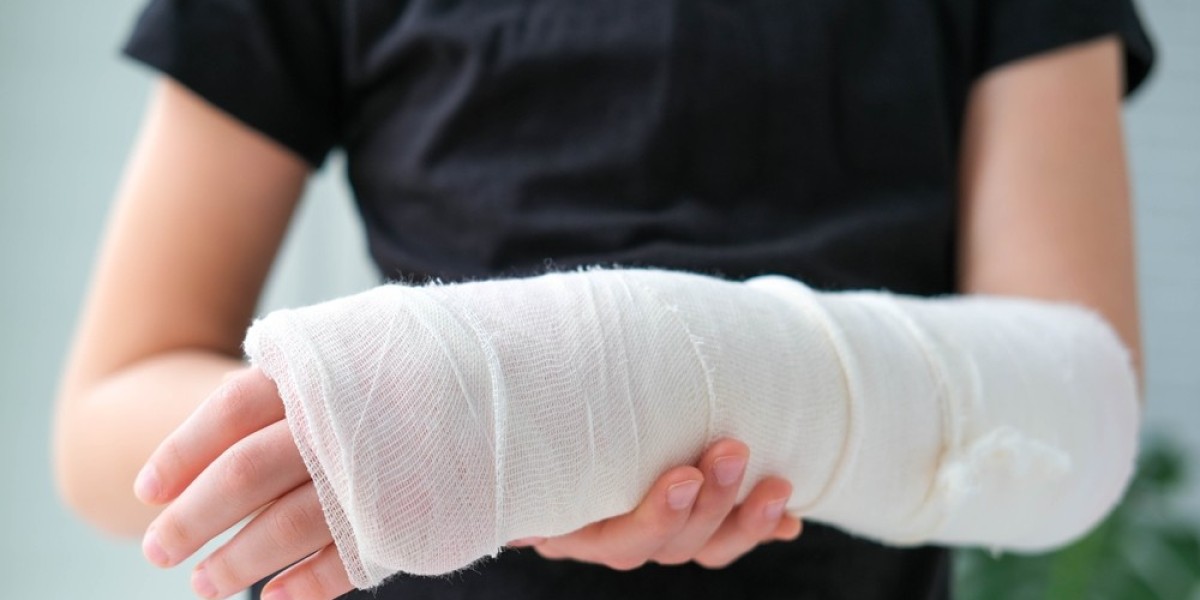Bone fractures in children and adults can differ significantly due to variations in bone structure, growth patterns, and healing processes. CT scans to diagnose bone fractures—help in a better understanding of the bone structures while precisely and keenly highlighting the problem area. Children’s bones are more flexible and contain a higher proportion of collagen, which makes them less brittle and more resistant to breakage. Additionally, the presence of growth plates—areas of developing cartilage tissue near the ends of long bones—means that fractures in children can impact their bone development if not treated carefully.
In contrast, adult bones are denser and more rigid, which leads to different fracture types and a slower healing process. As adults age, bone density tends to decrease, increasing the likelihood of fractures and complicating recovery. Understanding these differences is crucial for medical professionals in diagnosing, treating, and managing fractures effectively in both children and adults, as each group requires distinct approaches to optimize healing and minimize long-term complications. Therefore, this guide explores key differences between bone fractures in adults and children. Keep scrolling to understand the context better!
Understanding Bone Fractures
A fracture, commonly known as a broken bone, occurs when a bone is subjected to a force stronger than it can endure, causing it to crack or break. Fractures can result from direct trauma, falls, or high-impact injuries and may vary in severity from small cracks (hairline fractures) to complete breaks. While fractures can happen in any bone, those in the arms are particularly common due to the body’s instinct to use the arms for support during falls.
Also, effective treatment of fractures depends on the type and location of the break, as well as the individual’s age and overall health, with different approaches needed for children and adults to ensure proper healing.
Recognizing the Symptoms or Signs of Bone Fracture
Bone fractures, unlike other skeletal injuries such as dislocations, involve an actual break in the bone, though distinguishing between these injuries can sometimes be challenging. In cases where there is uncertainty about the type of injury, it’s safest to assume a fracture and proceed with appropriate care.
The signs and symptoms of a bone fracture can vary based on the bone affected and the severity of the break but often include:
Intense pain at the site or location of the injury.
Swelling around the affected area.
Bruising or discoloration.
Visible deformity or misalignment.
Difficulty or inability or excruciating pain in moving the injured limb.
Differences Between Children and Adult Bone Fractures—A Deeper Dig into It
Bone fractures can vary significantly between children and adults due to differences in bone composition, growth processes, and healing abilities. These distinctions affect how fractures occur, how they are treated, and how well they heal. Below is an in-depth examination of the key ways in which bone fractures differ between children and adults.
Difference Between Bone Structure and Composition
In children, bones are more flexible and contain a higher proportion of collagen, which gives them a greater capacity to absorb impact without breaking completely. Their bones are also less mineralized and, therefore, more pliable. This flexibility can lead to unique fracture types, such as greenstick fractures, where the bone bends and cracks without breaking all the way through.
On the other hand, adult bones are denser and more rigid, which makes them more susceptible to complete breaks when exposed to trauma. The density of adult bones means they are stronger but less able to bend, resulting in fractures that are often more severe and difficult to treat, particularly in older adults with decreased bone density.
Fracture Implications and Growth Plates
Growth plates are areas of developing cartilage tissue located near the ends of long bones in children. These areas are softer and more vulnerable to injury. Fractures involving growth plates, known as “physical fractures,” can interfere with bone growth if not properly treated. Growth plate injuries are a primary concern in pediatric fractures, as damage to these areas can lead to permanent growth disturbances.
Whereas in adults, growth plates have closed and turned into solid bone, which means adults do not face the same risks of growth disruption. However, without growth plates, fractures in adults are more likely to involve joint surfaces or areas of higher bone density, which can complicate healing and lead to joint stiffness or arthritis.
Healing and Recovery Process
Children’s bones have a remarkable ability to heal quickly due to a higher rate of bone remodeling and a rich blood supply. Younger children can heal from fractures within weeks, depending on the severity of the injury. Their bodies can also correct minor bone deformities over time, reducing the need for surgical intervention.
On the other hand, adult bones take longer to heal because of a slower cellular regeneration process and decreased bone remodeling capacity. Recovery from fractures in adults can take several months, and, in some cases, fractures may heal improperly without medical intervention, requiring further treatment. Aging adults, especially those with conditions like osteoporosis, may experience chronic pain or reduced mobility even after healing.
Management Approaches and Challenges
Treatment for fractures in children often involves casting or splinting rather than surgery, as their bones can realign naturally during the healing process. However, fractures that involve growth plates require careful assessment to avoid long-term growth issues. Pediatric orthopedists are specially trained to address these challenges, ensuring that treatment minimizes the risk of growth disturbances.
Whereas on the other hand, adults, particularly older individuals, fractures often require more aggressive treatments, such as surgery with metal plates, screws, or rods to stabilize the bone. Moreover, rehabilitation may include physical therapy to restore strength and mobility, especially for complex fractures. Additionally, age-related factors like decreased bone density and the presence of other medical conditions can complicate both treatment and recovery, often requiring a multifaceted approach.
Complications and Long-Term Effects
In children, the primary concern with fractures is potential growth plate damage, which can result in uneven bone growth, limb length discrepancies, or angular deformities. However, due to their bone’s natural remodeling capabilities, most children recover without long-term issues when treated appropriately.
While adults, especially those with osteoporosis or other underlying conditions, face a higher risk of long-term complications from fractures. Common complications include joint stiffness, chronic pain, and post-traumatic arthritis. Elderly adults may also experience a loss of mobility, which can impact overall health and quality of life, emphasizing the need for preventive measures such as fall prevention and bone health management.
Fracture Healing—How Long Does It Take?
The time required for a fracture to heal depends on several factors, including the patient’s age, the specific bone that is broken, and the location of the fracture. However, younger children heal more quickly than teenagers, who in turn heal faster than young adults, while older adults may experience the longest recovery times. For young children, most fractures heal within 4–6 weeks. Teenagers typically need around 6 weeks, while adults often require even longer for full recovery.
Even when a cast is removed, the bone may still need additional time to regain full strength, so wearing a supportive splint is common during this period. This extra protection allows the bone to continue healing and helps prevent re-injury if physical activity is resumed too soon.
Read Also: How Brain Scans Are Helping to Reduce Mental Health Stigma
To Wrap Up
In summary, bone fractures in children and adults differ widely due to variations in bone structure, growth factors, and healing capabilities. Children’s bones are more flexible and resilient, allowing for quicker healing and natural correction of minor deformities or disturbances. However, fractures involving growth plates in children require careful handling to avoid disrupting their bone development and impacting their future growth. Adult bones, in contrast, are denser and more brittle, making them susceptible to complete breaks and slower recovery times.
Therefore, fractures in adults often require surgical intervention and prolonged rehabilitation, with complications like arthritis and chronic pain posing significant risks. Understanding these differences is essential for medical professionals to provide age-appropriate treatment and for individuals to make informed decisions about bone health at various stages of life. In addition to this, what matters is precise and accurate imaging for the right and timely intervention. Hence, convenient medical imaging services that conduct easy, comfortable processes, and provide accurate results must always be considered first when encountering any bone injury.
As we continue to learn more about bone biology and fracture management, the prospects for effective treatments and improved outcomes for both children and adults look promising.










